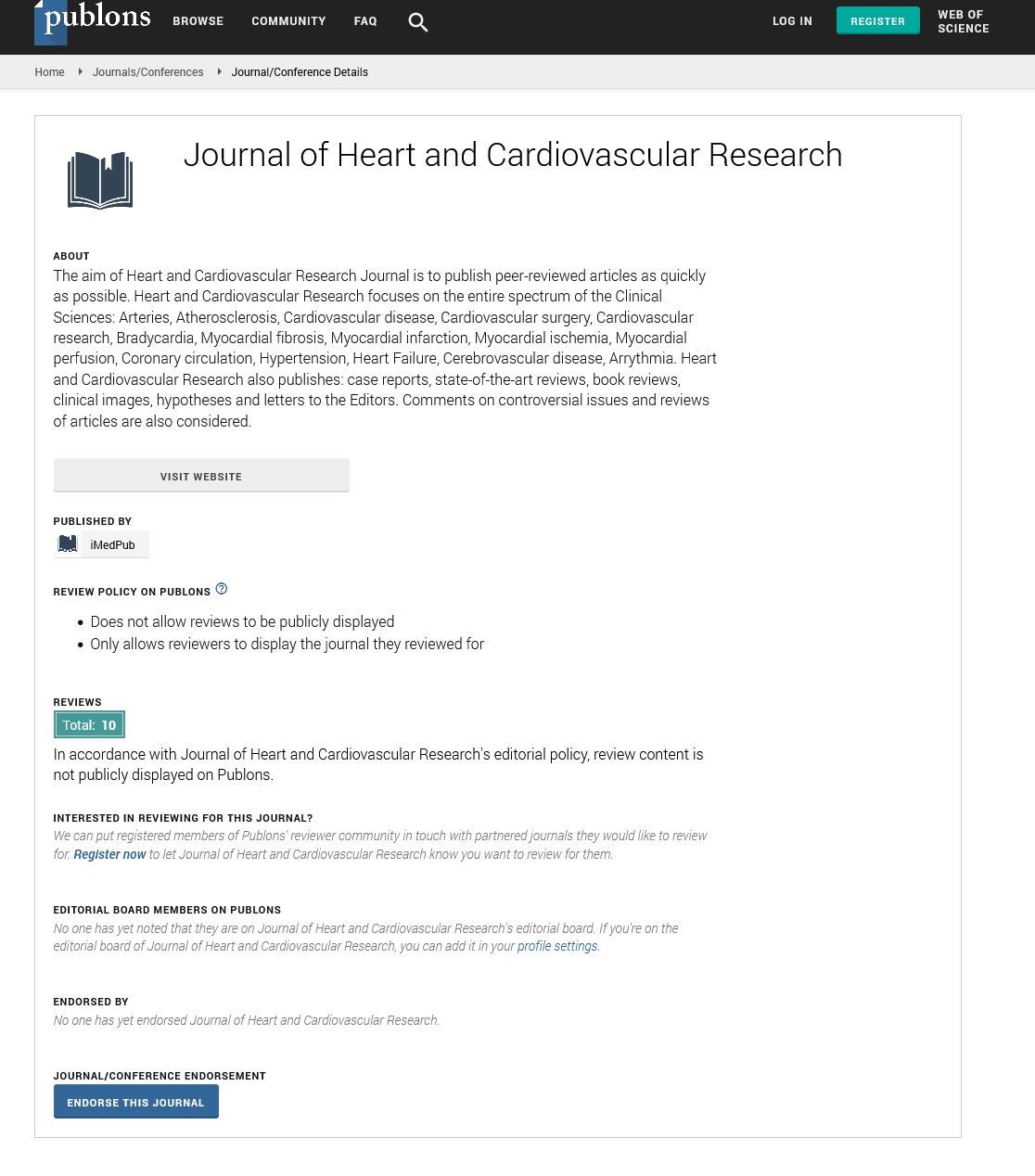ISSN : ISSN: 2576-1455
Journal of Heart and Cardiovascular Research
Abstract
Mechanisms of Sodium Hypochlorite-Induced Contraction of Rat Aorta: Potential Importance in Atherogenesis and Apoptotic Phenomena in Cardiovascular Diseases- Burton M Altura- Downstate Medical Center
Introduction:
Hypochlorite (OCl-) is one of the most aggressive oxidants of reactive oxygen species which can be produced by the myeloperoxidase (MPO)-H2O2-chloride system. During phagocytosis, neutrophils undergo a burst of respiration in which oxygen is reduced to superoxide anion (O2−), which dismutates to form H2O2. MPO is discharged from the cytoplasmic granules into the phagosome following particle ingestion. It is thought to utilize H2O2 to oxidize halides, which then react with and kill ingested microbes. The initial product of the MPO-H2O2-chloride system is hypochlorous acid, and the subsequent formation of chlorine, chloramines, hydroxyl radicals, singlet oxygen, and ozone have been proposed.
Objectives:
Male adult Wistar rats (200 g-470 g) were sacrificed by stunning and subsequent decapitation. The aortas were isolated according to previously established methods. The vessels for the ring segments were carefully excised, cleaned, and the tissues cut into 3- to 4 mm segments. For intact tissue preparation, extreme care was taken to avoid damage of endothelial cells. For denuded arteries, the intima of the vessels were removed by gently rubbing against the teeth of a pair of forceps [18]. The tissues were placed in normal Krebs- Ringer bicarbonate (KR buffer) solution containing (in mM): NaCl 118, KCl 4.7, KH2PO4 1.2, MgSO4 1.2, CaCl2 2.5, dextrose 10 and NaHCO3 25.
Results:
To examine for a possible role of age and body weight in NaOCl-induced vasoconstriction of intact aortic rings, experiments were carried out in rats of different ages and weights. As shown in, we observed a stronger contractile effect of NaOCl on aortic segments with increasing age and weight of the rats. These results suggest that the contractile responses of the vessels to NaOCl are associated with both age and body weight. This was not observed for KClinduced contractions.
Conclusions: In summary, the data from the present investigation suggest that NaOCl induces contractile actions on rat aortic rings in concentrations of from 75 μM to 5 mM, but not relaxation on rat aortic rings under resting tension. These NaOCl-induced contractions are mediated via the activation of several wellknown signal transduction pathways, and elevation of intracellular free Ca2+ levels, and are independent of the endothelium. Production of, and contact, of at least rat aorta with this most highly-reactive oxygen species, even in low concentration, appears to result in irreversible damage of the aortic smooth muscle cells. Such findings are thus quite different from those observed for H2O2, O2.−, or peroxynitrite [8,10,12,14,37-43] but resemble those obtained for hydroxyl radicals [16] and requires further investigation. Lastly, if our new findings hold for the peripheral microvasculature, they could be suggestive of a very important role for generation of hypochlorite in regulation of the microvasculature and its pathophysiology, particularly in inflammatory processes, atherogenesis, coronary heart diseases and the aging process.
Author(s): Jian-Ping Liu1, Wenyan Li1, Bella T Altura1,3-5 and Burton M Altura1-5*
Abstract | PDF
Share This Article
Google Scholar citation report
Citations : 34
Journal of Heart and Cardiovascular Research received 34 citations as per Google Scholar report
Journal of Heart and Cardiovascular Research peer review process verified at publons
Abstracted/Indexed in
- Google Scholar
- Sherpa Romeo
- China National Knowledge Infrastructure (CNKI)
- Publons
Open Access Journals
- Aquaculture & Veterinary Science
- Chemistry & Chemical Sciences
- Clinical Sciences
- Engineering
- General Science
- Genetics & Molecular Biology
- Health Care & Nursing
- Immunology & Microbiology
- Materials Science
- Mathematics & Physics
- Medical Sciences
- Neurology & Psychiatry
- Oncology & Cancer Science
- Pharmaceutical Sciences
